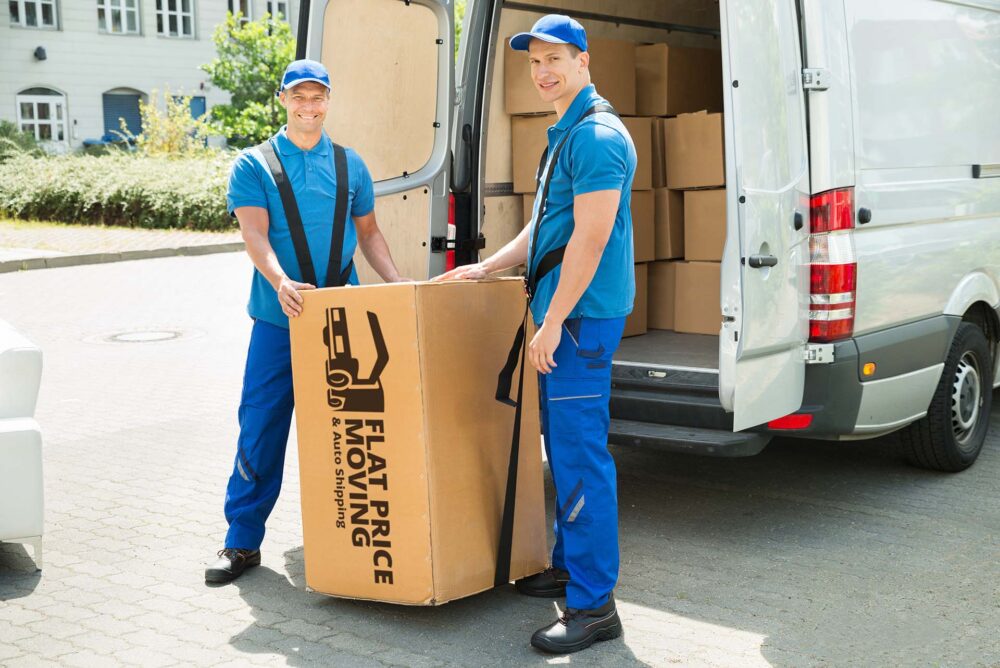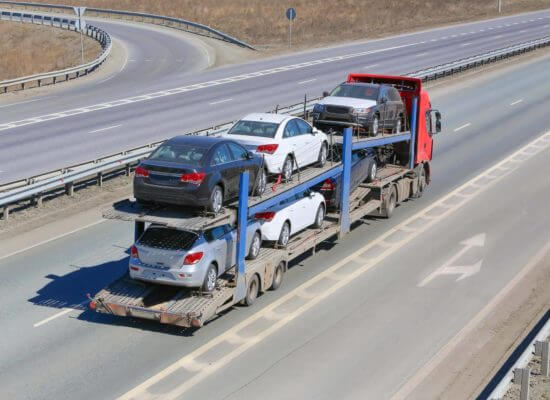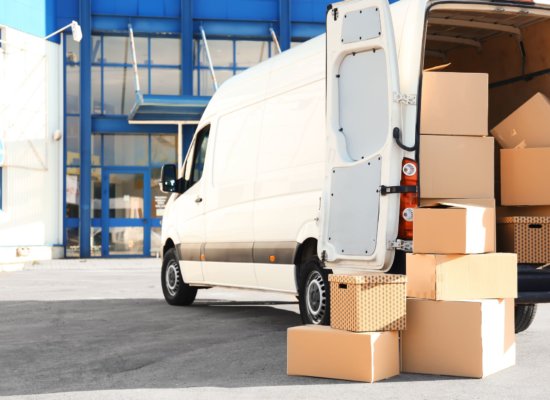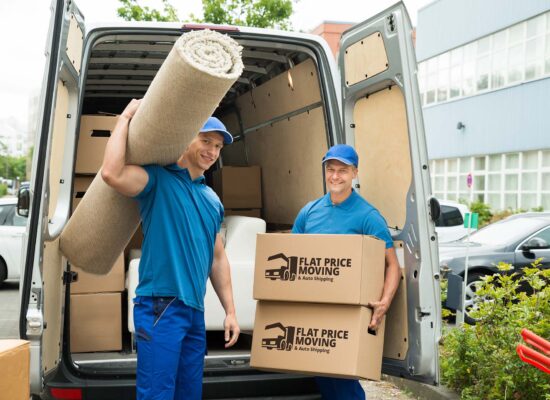Stress-Free Packing Schedule for Moving With Flat Price Auto Transport and Moving
Moving to a new home can be exciting, but the boxing-up process often brings stress and overwhelm. Don’t worry! With a well-planned packing schedule for moving, you can transform this complex task into a manageable and even enjoyable experience. We will help you create a thorough, stress-free packing timeline for moving, ensuring you’re prepared and organized for the upcoming adventure.

Why a Packing Schedule for Moving Matters
A moving packing plan is crucial for several reasons. It reduces last-minute rush, helps prioritize tasks, ensures nothing is forgotten, minimizes stress and anxiety, and allows for a more organized relocation. By breaking down the entire process into manageable timeframes, you’ll find the entire experience much less overwhelming.
8 Weeks Before Moving Day – Start Early for a Smooth Move
Beginning this process early is key to a stress-free relocation. Eight weeks before the big day, create a moving binder to store replication-related papers and organize all the important documents in one place. Include checklists, important contacts, and a calendar.
This is also the time to downsize and purge. Go through each room and decide what to keep, donate, or discard. Remember, less stuff means less to pack! So, try to get rid of everything that doesn’t spark joy in you by selling them in online shops or donating to charity.
This Is the Perfect Moment to Research and Choose the Right Auto Transport Company and Services
An essential part of the 8-week preparation should be researching and selecting the right long-distance moving services. Booking early helps you secure the preferred date. This decision can significantly impact the ease of this relocation. Start by determining what solutions you need. Do you require full packing services or a transport-only option?
Once you’ve identified your needs, begin researching moving companies. Look for licensed and insured long-distance movers with positive reviews and ratings from previous customers (like Flat Price Auto Transport and Moving). Don’t hesitate to ask for recommendations from friends, family, or colleagues who have recently moved.
When you’ve narrowed the options, request detailed quotes from at least three companies. These estimates should be in writing and include all potential fees. So, be wary of estimates that seem too good to be true – they often are.
Ask each car shipping company about their experience with relocations similar to yours.
If you have special items like pianos, artwork, or antiques, ensure the long-distance moving company has experience handling them.
Inquire about their packing materials and techniques, especially for fragile items.
Don’t forget to check if the company offers insurance options. While basic coverage is often included, you may want to book a full protection policy for peace of mind. Finally, once you’ve chosen a cross-country moving company, book them as soon as possible. The best cross-country movers often have busy schedules, especially during peak moving seasons.

6 Weeks Before – Tackle the Non-Essentials
With six weeks to go, it’s time to start actual packing. Focus on seasonal items first. For example, pack winter clothes if you’re relocating in summer, or vice versa. Then, tackle storage areas like the attic, garage, and basement. These areas often contain items you use infrequently.
This is also a good time to carefully wrap and pack art and decor items such as paintings, picture frames, and decorative pieces. Don’t forget about books and media! Box up books, DVDs, and CDs, but remember to use small boxes as these items can be heavy.
4 Weeks Before – Tackle One Room at the Time
Well, it’s time to intensify boxing-up efforts. A room-by-room approach ensures thoroughness and helps maintain organization. Here’s how to tackle each area effectively.
Maximize Efficiency in Less-Used Spaces
Start with guest rooms and other less frequently used areas. This allows you to pack thoroughly without disrupting the daily routine. Use this opportunity to declutter further and get rid of everything you haven’t used for years.
Create a Functional Home Office Pack-Up Plan
When boxing up the home office, prioritize non-essential documents and equipment. Create a system for important papers that you’ll need access to and set them aside. Digitize everything and create multiple backups to minimize loss and reduce physical clutter.
Balance Aesthetics and Functionality in Living Areas
Focus on boxing up decorative items and non-essential furniture in living and dining rooms. Leave only the bare necessities for daily use. This is an excellent time to clean everything as you go.
Strategize Boxing Up the Kitchen Space
Begin with items such as special occasion dishware and seasonal cookware. Pack small appliances you certainly won’t need soon. Create a to-do list for gradually tackling the rest of the space as you get closer to moving day.
3 Weeks Before – It’s time for a Wardrobe Management
Three weeks before the big day, focus on the closets – in other words, clothing, accessories, and shoes. Pack rarely worn items like special occasion wear and corresponding accessories. Box up guest linens and extra towels, keeping essentials for the final week.
Sort through jewelry, belts, scarves, and other accessories, group them and store them securely. Pack seasonal shoes and special occasion footwear, keeping everyday shoes accessible.
Don’t forget to create a box with items for the last few days and the big day itself. Set aside a separate, secure box for valuables you plan to transport personally. This comprehensive approach will help you stay organized and reduce anxiety immensely.

2 Weeks Before – Packing Bathroom, Living Room, and Kitchen Essentials While Maintaining Daily Life
Now, you should focus on boxing up the bathroom and kitchen. Create a small kit for daily use in the bathroom and keep out only necessary kitchenware for the final days. Pack electronics, back up computer data, and secure cords with devices. Dispose of hazardous materials responsibly at local recycling centers or hazardous waste facilities.
If you can’t relocate plants yourself, give them to family and friends. Also, while storing cleaning supplies, remember that you’ll likely need to transport these yourself, as many movers won’t handle them. This approach ensures efficient packing while addressing safety and practical considerations for items that require special attention.
1 Week Before – Final Push and Boxing up Essentials
In the final week, store the most kitchen items and plan for takeout or simple meals. Do a final load of laundry and box up the remaining clothes. Store all bedding except what you’ll need for the last night. Create an “Open First” box with relocation essentials you’ll need immediately upon arrival.

The Big Day Has Arrived – Tackling Last-Minute Items
As the sun rises on this day, you might feel a mix of excitement and nervous energy. Even with meticulous planning, there’s always something that needs to be packed at the very last moment. These are typically things you’ve been using right up until this moment. Boxing up these items requires a delicate balance. You want to ensure you have what you need until the last minute, but you don’t want to leave something important behind. That’s why you should start this day as early as possible.
To help you navigate this final stage, we’ve compiled a list of often-overlooked items that should be among the last to go into boxes. By keeping these in mind, you can ensure a smooth transition from the old home to the new one. Here’s what to keep an eye out for as you do the final sweep of the soon-to-be former residence:
- Bedding and towels,
- Toiletries and medications,
- Chargers and phones,
- Spare keys,
- Remaining cleaning supplies.
Expert Tips for a Stress-Free Packing Process
Throughout the schedule, keep these strategies in mind. Label everything clearly, use color coding for easy room identification, and take photos of electronic setups for easy reassembly.
Keep important documents close, carrying crucial papers with you, not in the relocation truck. Use proper wrapping techniques for breakables to prevent damage. Stay organized by keeping relocation binder constantly updated.
Manage This Entire Process If You’re Relocating Kids and Pets
Relocating with children adds extra considerations. Involve kids in the process by assigning age-appropriate tasks. Prepare a special box for each child with favorite toys and comfort items. Try to maintain normal routines as much as possible. For pets, keep them calm and secure during the entire process. Ready their favorite snacks and give them a designated space inside the home to make them comfortable.

Post-Move Unpacking Strategy for a Smoother Settling Down Process
Once you’ve arrived at the new home, start with unpacking essentials first. Follow the chosen labeling system and unpack room by room. Set up major furniture before unpacking boxes. Remember to take the time and don’t rush to unpack everything immediately.
Eco-Friendly Packing Tips
Be mindful of environmentally friendly storage ideas. Use reusable or plastic containers instead of cardboard ones. Repurpose household items like towels and linens as padding material. Properly dispose of or store all supplies after you’ve unpacked everything.
Celebrate the End of Successful Relocation
After following this stress-free schedule, take a moment to enjoy and appreciate the new space. Thank the helpers, whether friends, family, or movers who assisted. Also, plan a housewarming to celebrate the new beginning with loved ones. Reflect on the process and keep what worked well for future reference.

With Flat Price Auto Transport and Moving, the Stress-Free Move Awaits
Following this comprehensive timeline, you’ve set yourself up for a smooth, organized, and low-stress journey. Remember, the key to a successful relocation lies in early planning, consistent effort, and staying organized throughout the process. However, if you find the process overwhelming or simply don’t have the time to manage all these details, hire professional movers. They will know how to handle everything, ensuring your belongings are safely and efficiently transported to the new home.
At Flat Price Auto Transport and Moving, we specialize in making every move as stress-free as possible. Our team is equipped to handle all aspects of this journey with care. We know that each relocation is unique and therefore tailor our services to any specific needs.
So, don’t let the relocation stress overwhelm you. Contact us today for a free, no-obligation quote. Let us show you how our expertise can transform this experience into a seamless adventure. Remember, with Flat Price Auto Transport and Moving company, you’re investing in peace of mind.










